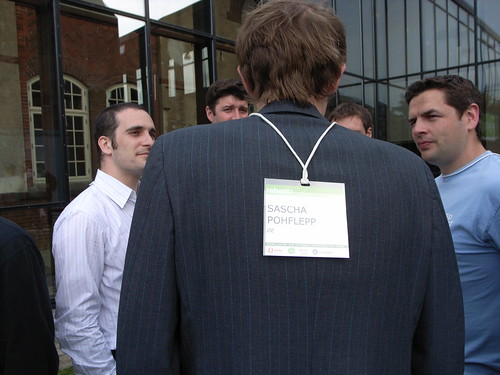
Reality augmentation instruments, designed with more than a suggestion of the now-canonical handheld device footprint. These are practically those sort of *kids’ toy* editions of adult devices, you know? I’ve become recently consumed by what a reality augmentation device might be and, as pertains the topic herein, how changes in the way we see changes the way we think.
A few notes for the notebook on this essay Visualisation and Cognition by Bruno Latour. In it I found a few points relevant to this idea of *design fiction* — the imbrication of design, science fact and fiction to help imagine and materialize new kinds of near future worlds. The essay certainly isn’t about this directly, but there were some aspects of it that relate ideas to their materialization via visual techniques, specifically *immutable and mobile* visualizations — ways of making ideas travel from one place to another. Film is a means of mobilizing ideas, enrolling more and more allies through an immutable inscription.
Below are my own notes, mostly to myself. I am most interested in what might be extracted from this essay regarding the significance of *visual inscriptions* to change and innovation; and the relationship between *props and prototypes* — are they in a sense one and the same? If they are meant to stand in for *what could be?* This relates to Latour’s points indirectly — he emphasizes the capability of linear perspective and drawing because of their ability to capture an idea and move it from place to place in order to enroll allies and make things happen. It becomes possible to have an idea, render it and effectively bring people to where you have been, by bringing that place or that idea to them without them having to go through the trouble of making the journey on their own. Film, I *think*, can do the same thing and is perhaps the contemporary equivalent of the more historical points Latour makes. This might be a stretch, but drawing and film might be performing similar functions in this regard — allowing an idea to be rendered and to travel without too much hassle.
If I had to summarize the points here, I would draw from this moment in the film Jurassic Park where the high school science film *Mr. DNA* in which a complicated, technical process of extracting dinosaur DNA is explained in an entertaining narrative film. It is a complicated phenomena that is summarized in a compelling visual story. As a function in the film itself, this allows the audience to go on this journey that scientists (curiously, both in the film and external to it, because this hypothesis explicated in the high school science film is an active concept by *real* scientists) are making themselves. Once taken on this journey, the audience can at least temporarily comprehend the possibility that dinosaurs can exist today.
There are two points argued in Latour’s Visualisation and Cognition essay that are relevant for the work here in the Laboratory: the invention of mobile, immutable, presentable, legible objects and; creative visualization — not the data viz stuff that’s all the craze these days (although this is relevant), but new/evolved ways of describing and presenting, not just graphs and tables that visualize *complicated* or *hidden* phenomena that can now be rendered legible because masses of realtime data exist in public databases. But, what I mean more specifically is to leverage an old trick of optical consistency — making impossible places, impossible things realistic, or to make possible objects more probable than other possible objects.
1. The first point Latour makes is to emphasize the significance of writing and imaging craftsmanship in the work of what I will call — innovation. Rather than economic (materialist) or intellectual (mentalist) historical perspectives — the big, overarching views used to describe the specific characteristics of modern technoscientific cultures — the ability and deployment of descriptions and drawings is what allows ideas to evolve in a specific way which is this: not only does writing and imaging allow an idea to move from precisely that — an idea in someone’s head to more material form — it allows that idea to travel without changing; it becomes what Latour calls an “immutable mobile.” However clever or insightful one might be alone, the ability to “muster on the spot the largest number of well-aligned and faithful allies” is the way to win, for example, a confrontation, or to win a decision in one’s favor. (“We need..to look at the way in which someone convinces someone else to take up a statement, to pass it along, to make it more of a fact, and to recognize the first author’s ownership and originality.” [p.5])
As simple (thankfully!) as drawing a map of an island and being able to bring it back to Versailles across a vast distance in order to enter it into the bureaucracies that will debate, decide and declare the best ways to sail to, or attack or colonize that island is far more significant than *only* being able to get to the island in the first place (via the commitment of capital to fund the journey, the ability to navigate via the stars, etc.). One must bring these two perspectives together. It is not enough to be able to do the extreme journey on its own if the extreme journey does not help mobilize and muster new resources.
“..it is not perception which is at stake in this problem of visualization and cognition. New inscriptions, and new ways of perceiving them, are the result of something deeper. If you wish to go out of your way and come back heavily equipped so as to force others to go out of their ways, the main problem to solve is that of mobilization. You have to go and to come back with the “things” if your moves are not to be wasted. But the “things” you gathered and displaced have to be presentable all at once to those you want to convince and who did not go there. In sum, you have to invent objects which have the properties of being mobile but also immutable, presentable, readable and combinable with one another.”
So..there’s that. It’s not enough to be clever — one must also effectively communicate, in all sorts of ways, beyond only rhetoric.
2. The second relevant point for the Laboratory tails on to the first point: if we want to show possible near future worlds that might tend away from convention, or lean towards speculation we must do so simply, visually and with as effective a description (narrative) as possible. This is the reason why we’ve been very interested in the production of visual stories — not just the stories themselves, but the *how* of their making, specifically the creation of visual stories that may show things that cannot yet occur outside of a visual or written fiction. (c.f. The Reality Effect of Technoscience) Why is this significant? Why does *design fiction* — the imbrication of design, science, fact and fiction — need to show (in the plain sense — visualize, render, draw)? Because “[h]e who visualizes badly loses the encounter; his fact does not hold.” [p. 16-17]
In summary: some things are best shown in order to be thought-through. This is relevant to the point of designing with fiction because we are trying to obtain in a real, material way a near future world which needs a way to compellingly enroll *allies* — supporters, interests, the imagination of people — in order to bring this world into being. This won’t just happen “cause” an idea is a good one. It has to be made good through the enlistment of participants who can be taken on the journey to that near future and then come back with the commitment and belief in this near future.
Two further notes from the essay.
The first is a point that starts the essay out — Latour is looking for another set of characteristics particular to *scientific modernity* (which I rephrase as *technoscientific culture*) that is something other than materialist or “mentalist”. That is, characteristics that are not about the accumulation or attributes of capitalism or economic growth; and not about brains that have grown with the times to allow us to be smarter. (The reasons we make aliens with huge heads.) What he is looking for is a simpler, less controversial (and perhaps less racist) character of technoscientific culture. Rather than the unyielding accumulation of more machines, intellectual property, wealth and so on to support the creation of new technical objects — what is it that allows ideas to generate and propagate? In a word, he looks to drawing — the ability to capture an idea and then mobilize it immutably.
And this is the second point. Perspective drawing is particularly relevant, he argues convincingly. It’s simple — perhaps too simple a description for some people — but compelling. Once something like, for example, a map can be drawn that captures a place and that map can show a place from a vantage point that allows the vantage point to move without changing the place, because of the rules and techniques of linear perspective), one can *move that place, taking that map back to Versailles to show the traders and politicians and aristocracy and bankers — and then..* Similarly with drawing a mechanism for a machine or press or siege weapon, etc. The idea can travel, because the flatness of paper makes this possible, and it can travel without changing because of the techniques of linear perspective — even if you change a viewport, the *thing* does not mutate.
Simple, Not Grand. Perspective over Capitalism.
Latour looks for explanations as to the specific underpinnings of our technoscientific culture in this essay. He describes a rather useful alternative to the two most common and tiresome (because they are so common) descriptions of the origins and special characteristics of modern technoscientific culture: the materialist and the “mentalist”, as he refers to them. The alternatives have everything to do with being able to project in a simple way through *visualization*
“The two-dimensional character of inscriptions allow them to merge with geometry. As we saw for perspective, space on paper can be made continuous with three-dimensional space. The result is that we can work on paper with rulers and numbers, but still manipulate three-dimensional objects “out there”.”
Are we really a technoscientific culture because we have become smarter? Or richer in ideas, resources, capital — both financial and intellectual? Rather than the hackneyed descriptions that rely on either a materialists (it has to do with the availability of resources, the unyielding *push* of capitalism to create more, better, faster, smaller), or a “mentalist” (we got smarter and smarter with time, ideas and *innovations* stacking up on top of each other, increasing the *up and to the right* curve of *progress*), Latour starts by wishing to obey the principle of Occam’s razor:
Hypotheses about changes in the mind or human consciousness, in the structure of the brain, in social relations, in “mentalités”, or in the economic infrastructure which are posited to explain the emergence of science or its present achievements are simply to grandiose, not to say hagiographic in most cases and plainly racist in more than a few others. Occam’s razor should cut these explanations short…The idea that a more rational mind or a more constraining scientific method emerge from darkness and chaos is too complicated a hypothesis.
With this set up we are able to look more closely at the simple, less-grand, less dichotomous divides between what was and what follows. Rather than “great divides” between prescientific and scientific cultures that force binaries and strong asymmetries which are useful for children’s bedtime stories (good versus evil; then versus now; us versus the others) but of little use for understanding the evolution of innovation and change, we should find simpler, more subtle explanations that do not strain credibility for their overarching, impossibly broad perspectives that are simultaneously simple. Simple and overarching don’t go well together and do not hold things together very well. They move too far away from the hand, from what people do in the everyday. They do work well for historians and their stories, but not particularly well for the work of craftsmen doing what they do.
Why is this a difficult point to start from? Why are “grand narratives” of innovation and evolution difficult to give up? Is history really a sequence of *disruptions* that suddenly appear from nearly nowhere? As Latour says, “The differences in the effects of science and technology are so enormous that it seems absurd not to look for enormous causes.”
How do you maintain an adequate description of the *scale* of effects but without explaining it through similarly scaled explanations like the history of human consciousness, the development of reason, unyielding accumulation and creation of capital of all sorts? What we want to do is avoid these usual explanations in order to describe innovation in a more empirically precise way, one that does not ignore the practice and craftsmanship of knowing, one that pushes aside omniscient economic and intellectual histories.
Inscriptions Mobilize Immutably
The mobilization of many resources through space and time is essential for domination on a grand scale. Latour proposes “immutable mobiles” as those objects that allow this mobilization to happen and that the best of these had to do with written, numbered or optically consistent paper surfaces(!).
1. Inscriptions are mobile. Things can’t move to other places, but *inscriptions* can.
2. They are immutable when they do move, as much as practical. Perspective enforces this. “..specimens are chloroformed, microbial colonies are stuck into gelatine, even exploding stars are kept on graph papers..”
3. Inscriptions are made flat, two-dimensional. “In politics as in science, when someone is said to master a question or to dominate a subject, you should normally look for the flat surface that enables mastery (a map, a list, a file, a census, the wall of a gallery, a card-index, a repertory) and you will find it.”
4. The scale of inscriptions can be modified. From billions of galaxies in a photograph, scale models of oil refineries the same size as a plastic model of an atom.
5. Inscriptions can be reproduced and spread.
6. Inscriptions can be reshuffled and recombined. (Metaphor and metonymy.)
7. Inscriptions can be superimposed as a result of their ability to be recombined/shuffled.
8. Inscriptions can be made part of a written text. (Captures from instruments merge with published texts; a present day laboratory is the unique place where the text is made to comment on the things which are already present within it. It is not simply “illustrated”, it carries all there is to see in what it writes about. Through the laboratory, the text and the spectacle of the world end up having the same character.)
9. The two-dimensional character of inscriptions allow them to merge with geometry. Space on paper can be made continuous with three-dimensional space.
The summary conclusion here is that writing and inscriptions are crucial characteristics of the technoscientific modernity — these are deceptively simple characteristics and not as grand as the creation of trade, or the invention of fungible currencies, or the invention of the telescope or perspective or a particular war or even the printing press. It is these things, certainly — but together with this ability to describe and to draw and to do so in a way that is mobile and immutable — that can travel back. You can go to the far reaches of the world or the imagination and then come back to show what you mean. And, the simpler, the better. No grand, esoteric explanations.
Why do I blog this?I like this perspective of coming back to simple explanations of things. It seems that complexity or quantity often rule in situations. More words; more data; more user study data; more pages in the PowerPoint. More and more stuff to hide behind before making a decision…and so on. I’ve been more intrigued by the power of a compelling visual description, even for awkwardly speculative perspectives or propositions. This is very similar in my mind to these moments in the design fiction idiom, especially the moment in science fiction films (which may as well be journey’s to other possible worlds) where something fantastical is revealed and the *how* is brought back to us as viewers to allow us to enjoy the film without questioning the *science* that belongs properly to the fiction.
Continue reading Showing And Telling: Some Notes On Visualisation and Cognition






